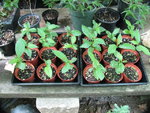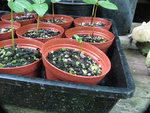Tidal Bonsai
Omono
Anyone willing to part with, or know where to get princess persimmon seedlings, or seedlings with a few years on them?
You should contact Julian Adam. He is close enough to you to do drive there.Anyone willing to part with, or know where to get princess persimmon seedlings, or seedlings with a few years on them?
Just like human being, you get male and female. You don't get both male and female on the same plant. You can graft female to a male tree so that tree can bear fruits. Cuttings from female will be female.I am confused with these. If you grow from seed do you get a male / female plant? Or can they grow as female or male? If they grow from seed as female / male plant can you propogate from the female portion and create a female plant? I don't reallly know much about general horticulture.
I am confused with these. If you grow from seed do you get a male / female plant? Or can they grow as female or male? If they grow from seed as female / male plant can you propogate from the female portion and create a female plant? I don't reallly know much about general horticulture.
Just like human being, you get male and female. You don't get both male and female on the same plant. You can graft female to a male tree so that tree can bear fruits. Cuttings from female will be female.
what time of year is best to take Princess Persimmon tree?
From what Julian said above, now is the time to call because they know what sex they are.
That is an amazing success rate! Could you share some photos of the seedlings?I started 25 seeds in April and every single one germinated. Best success I have ever had with seeds. They will be a mix of male and female. I am surprised that some could flower in three years. I had heard it was seven years.
And three years is an understatementYou can take cuttings or air-layers from a sexed tree, and you will therefore know what sex the clones will be.
The "waiting three years to know what sex they are" is only for seedlings.
The first picture is a grouping of seedlings in 3 inch pots. These were started in peat pots, not my normal thing. The one pot that looks empty has a very small plant. The first leaves were trapped in the seed and broke off but much to my surprise it mad a new set of leaves.That is an amazing success rate! Could you share some photos of the seedlings?



